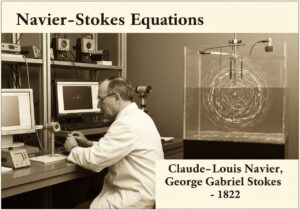A non-destructive testing metodo that is used to detect and analyze stress and microstructural changes in ferromagnetic materials.
- Metodologie: Clienti e marketing, Progettazione del prodotto
Barkhausen Testing

Barkhausen Testing
- Analisi delle modalità e degli effetti dei guasti (FMEA), Materiali, Proprietà meccaniche, Metalli, Prove non distruttive (NDT), Controllo di qualità, Gestione della qualità, Corrosione da stress, Ingegneria strutturale
Obiettivo:
Come si usa:
- Barkhausen testing is based on the Barkhausen effect, which is the phenomenon of a series of sudden changes in the magnetization of a ferromagnetic material when the magnetizing force is changed.
Professionisti
- Is a non-destructive testing method, is sensitive to changes in stress and microstructure, and can be used to test a wide range of ferromagnetic materials.
Contro
- Can be affected by a number of factors, such as temperature and surface condition, requires a skilled operator to interpret the results, and may not be suitable for all types of ferromagnetic materials.
Categorie:
- Ingegneria, Produzione, Qualità
Ideale per:
- Detecting and analyzing stress and microstructural changes in ferromagnetic materials.
Barkhausen Testing, rooted in the principles of magnetization changes within ferromagnetic materials, finds extensive applications across industries such as aerospace, automotive, and manufacturing, where the integrity of components is paramount. This methodology is particularly suited for the evaluation of fatigue and residual stress in critical parts like gears, shafts, and structural components, often employed during the quality assurance phase of production or during maintenance inspections. It is commonly initiated by materials engineers or quality assurance specialists who seek to assess the mechanical properties or performance history of a component without compromising its usability. The participation of cross-functional teams, including design engineers and metallurgists, can enhance the effectiveness of the testing process, as they provide context on the material properties and intended applications. Barkhausen Testing can also serve as a valuable tool in research and development settings, allowing for advanced analysis of new materials and enabling iterative design processes. This method is compatible with various testing environments, including in-situ examinations and laboratory investigations, providing flexibility in how and where assessments are conducted. The sensitivity of Barkhausen noise measurements to microstructural changes offers an avenue for predictive maintenance strategies, as shifts in material conditions can be monitored over time, leading to more proactive approaches in asset management.
Fasi chiave di questa metodologia
- Calibrate the Barkhausen noise measurement system to ensure accurate detection and analysis.
- Apply a variable magnetic field to the ferromagnetic material under investigation.
- Monitor the Barkhausen effect signals generated during the application of the magnetic field.
- Analyze the characteristics of the Barkhausen noise, paying attention to amplitude and frequency changes.
- Relate the observed changes in Barkhausen noise to stress and microstructural changes in the material.
- Validate the findings through comparison with known standards or additional testing methods.
Suggerimenti per i professionisti
- Integrate Barkhausen noise analysis with advanced elaborazione del segnale techniques like machine learning algorithms to enhance detection capabilities and interpretation accuracy of microstructural anomalies.
- Combine Barkhausen testing with complementary non-destructive methods, such as ultrasonic testing or eddy current testing, to obtain a comprehensive understanding of material conditions and improve reliability of results.
- Regularly calibrate and validate equipment against known standards to ensure measurement consistency and accuracy, particularly when analyzing variations in stress levels or microstructural changes in diverse ferromagnetic materials.
Leggere e confrontare diverse metodologie, raccomandiamo il
> Ampio archivio di metodologie <
insieme ad altre 400 metodologie.
I vostri commenti su questa metodologia o ulteriori informazioni sono benvenuti su sezione commenti qui sotto ↓ , così come tutte le idee o i link relativi all'ingegneria.
Contesto storico
1738
1757
1788
1800
1800
1800
1820
1687
1750
1788
1800
1800
1800
1810
1822
(se la data non è nota o non è rilevante, ad esempio "meccanica dei fluidi", viene fornita una stima approssimativa della sua notevole comparsa)















Post correlati
Questionari sul disagio muscoloscheletrico
Test multivariati (MVT)
Analisi di regressione multipla
Sistemi di cattura del movimento
Metodo MoSCoW
Test mediano dell'umore